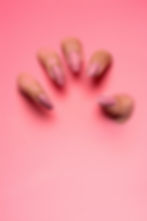Seen From Nails
- Pacifica Tan
- May 20
- 2 min read
Take a look at your nails right now. Are they polished, decorated, or left natural? Have you ever stopped to think about why you choose to style them (or not)? These are questions I’ve been reflecting on ever since I discovered the surprisingly painful (thanks to that harsh UV light!) yet oddly satisfying art of nail design.
What started as a beauty ritual has now blossomed into a massive global industry—complete with intricate product designs, mass production, and worldwide distribution. But beyond commerce, manicures also reflect and reinforce modern beauty standards. In my next two blog posts, I’ll explore deeper questions: Is nail art a form of self-expression, a thriving business model, or even a mirror of lingering gender stereotypes?
But first, let’s rewind to where it all began—when nails first became a canvas for identity and status.
Ancient Times
In early civilizations, well-kept and decorated nails were a mark of privilege. Royalty and the elite flaunted long, embellished nails as symbols of power. In ancient Egypt, upper-class women painted their nails in bold shades to signify wealth and allure.
The 20th Century
Fast-forward to the 1900s in the U.S., where nails became tied to social class, race, and respectability. One prevailing belief at the time? “Hard, claw-like nails—even on a seemingly kind woman—suggest a cruel, unchaste nature.” To avoid such judgments, many women frequented nail salons to achieve a "middle-class" look.
Today’s Nail Culture
Now, manicures are a celebrated form of artistry, with endless colors, shapes, and designs. Yet, despite society’s growing acceptance of self-expression, subtle biases persist—especially on social media. As journalist Nkosi notes: “Extravagant nails are often unfairly labeled ‘tacky,’ while short, neutral manicures remain the ‘elegant’ gold standard—a preference rooted in upper-class, white femininity.”

